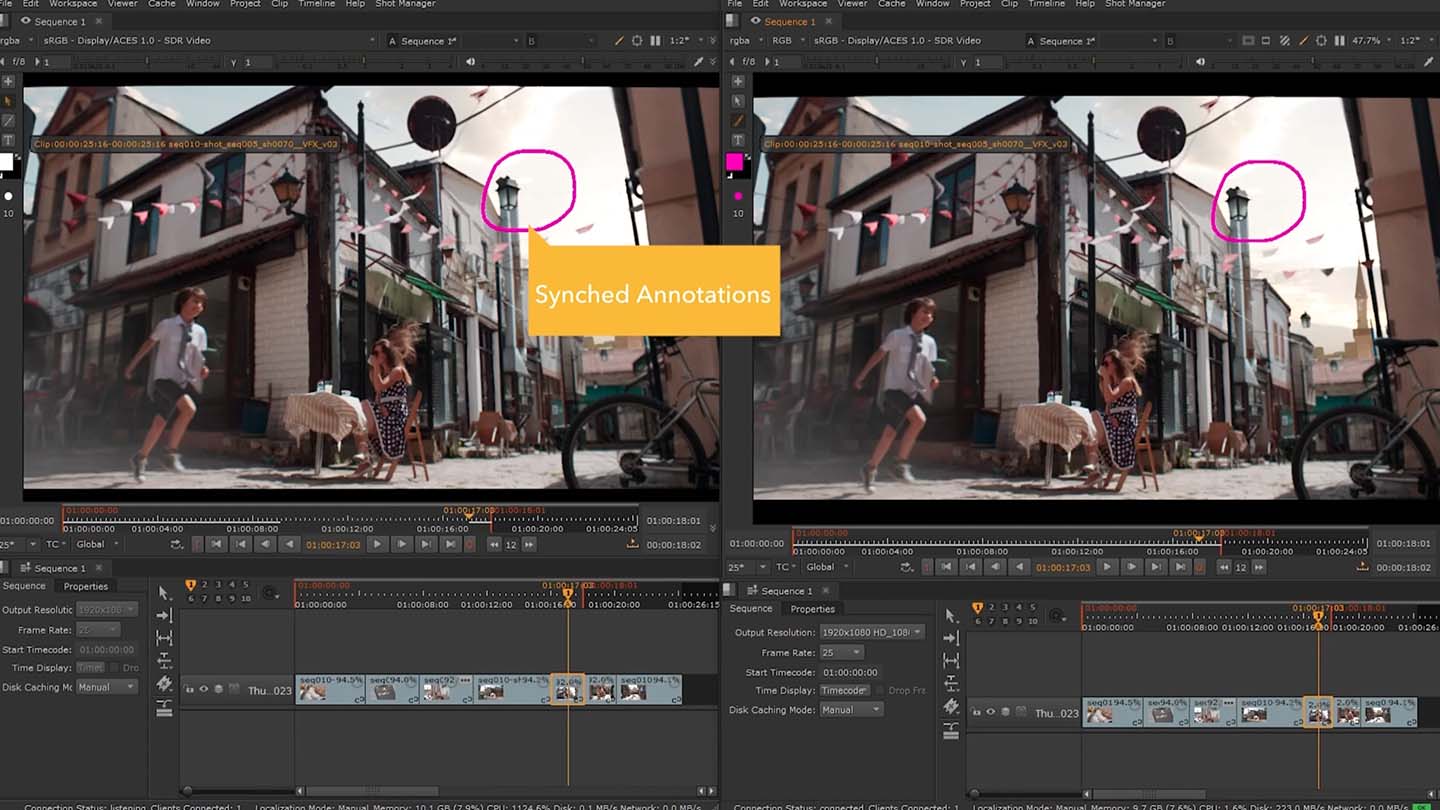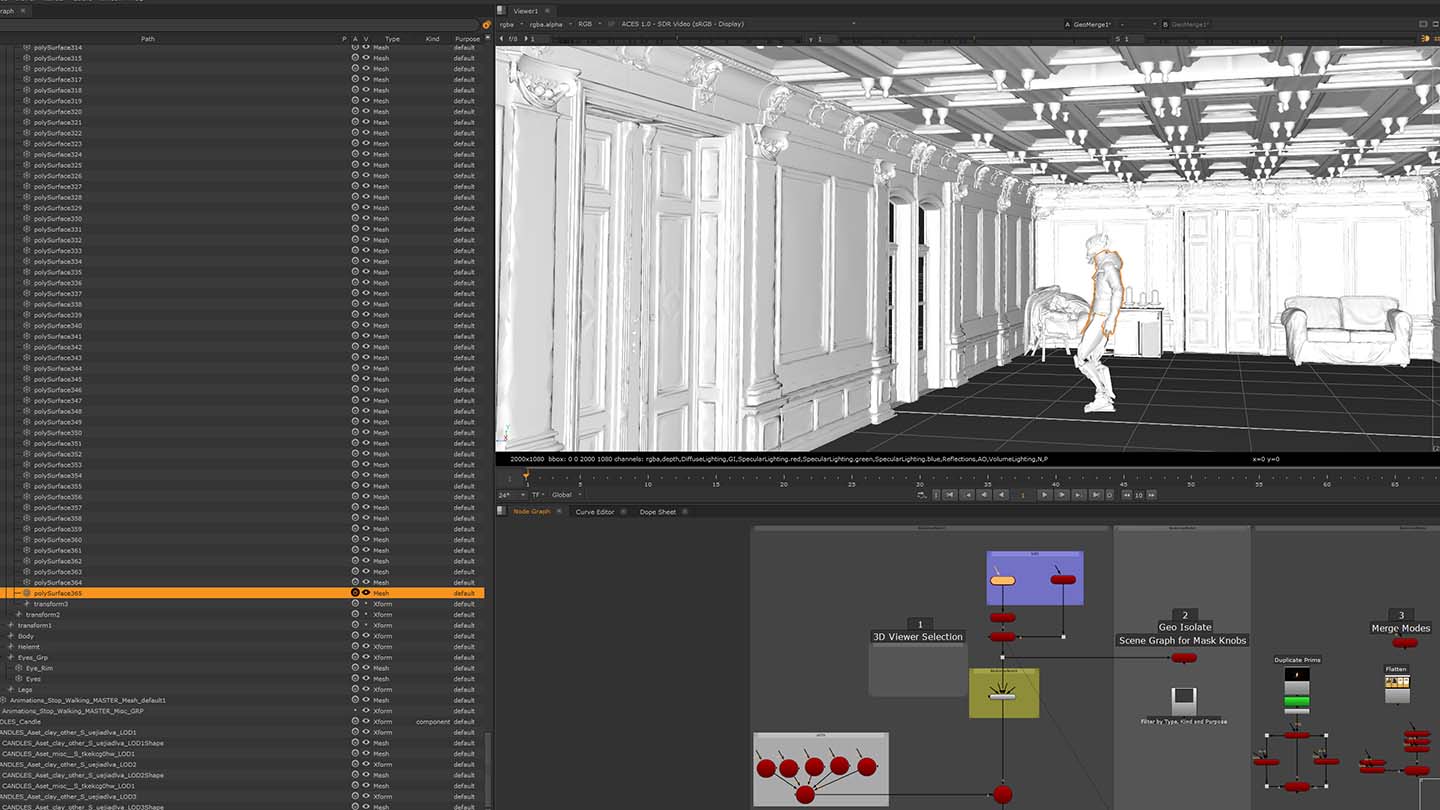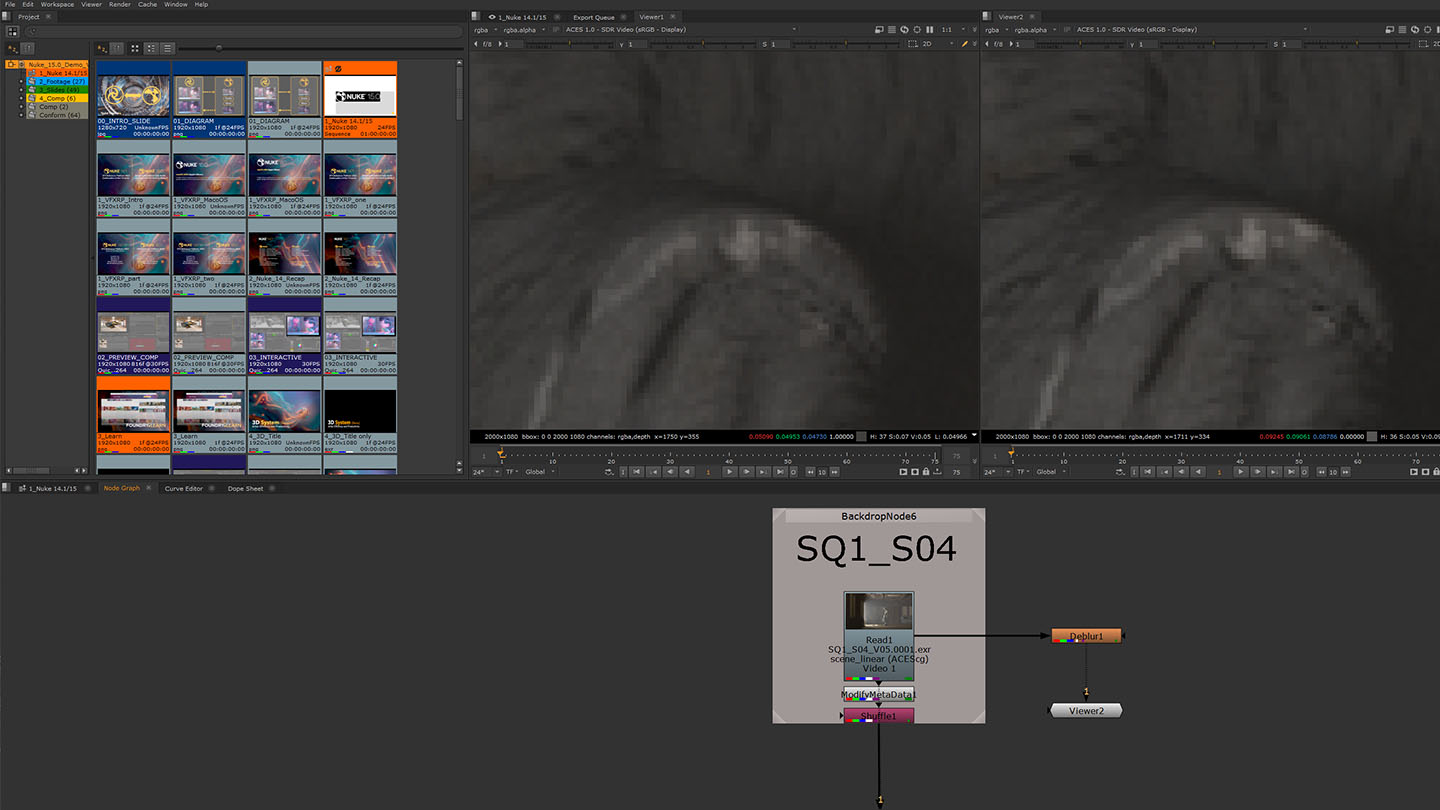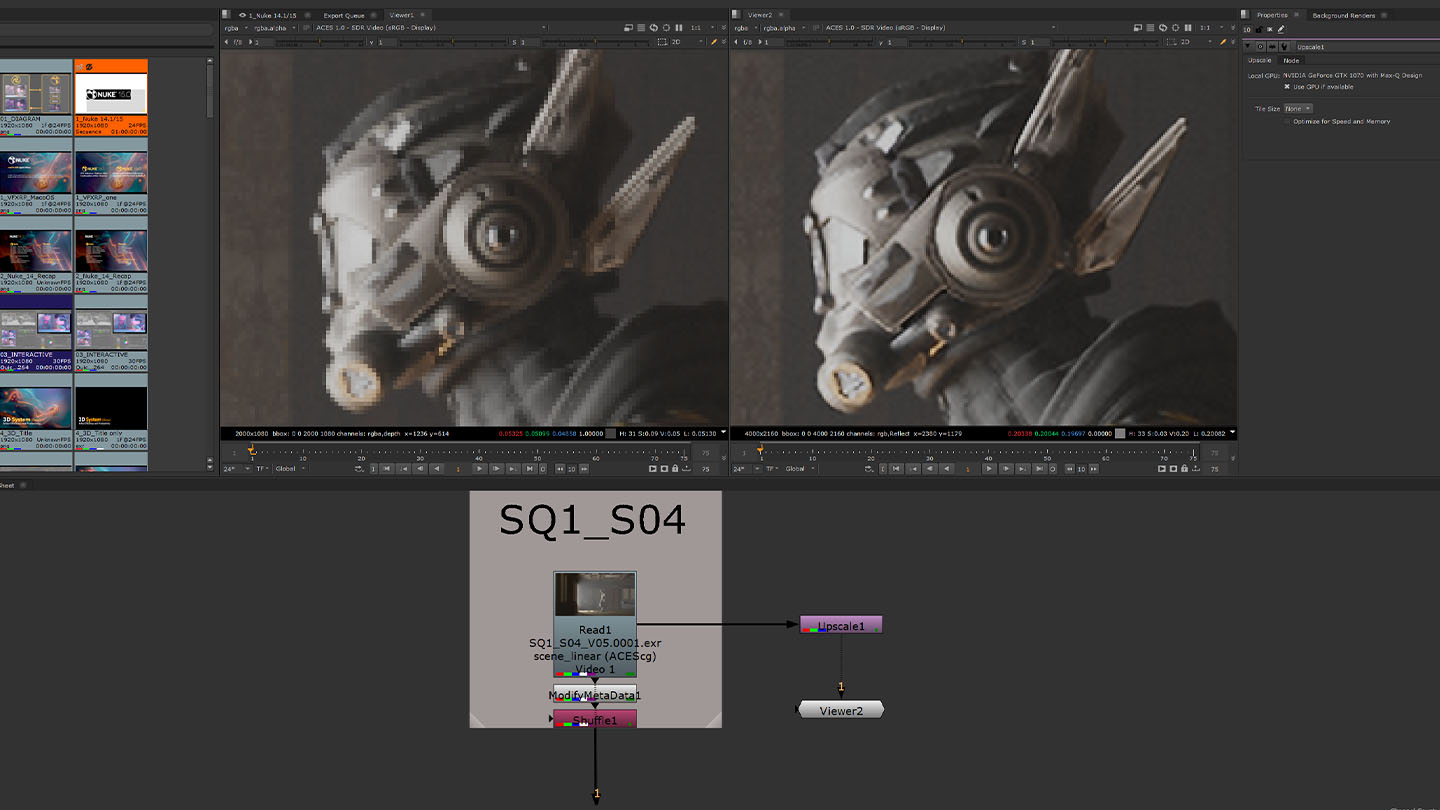Nuke Studio helps Twin Pines to take on larger projects
Part of Madrid’s rapidly growing visual effects hub, VFX studio Twin Pines is passionate about storytelling on the screen, and the pivotal role that visual effects play. It’s no coincidence that the Twin Pines name comes from the iconic and visually stunning scene in ‘80s blockbuster Back to the Future, where the time-travelling DeLorean makes its first trip back to 1955 from the Twin Pines Mall parking lot.
And as the post-production scene in Madrid continues to thrive, Twin Pines is able to take on a growing roster of increasingly complex projects thanks to the streamlined reviews, efficiency, and consistency offered by Nuke Studio.
Founded in 2008, Twin Pines first began using Nuke Studio — which combined with Hiero and HieroPlayer comprises the Nuke timeline tools — just a few years later. After several years working as freelancers, Juanma Nogales and Ana Rubio wanted to open a studio that freelancers would really want to work at. Only taking on projects that the team is particularly passionate about is a key part of that philosophy, along with a focus on quality, and fostering a good working environment. As a result, the studio has steadily grown from just two people and three workstations to a talented team of 47 artists and 10 production staff, with an ever-expanding list of projects.
“VFX is what really makes us feel the magic of cinema,” says Ana Rubio, Twin Pines Co-Founder. “Post-production is only one of the pieces that make a film work as a whole, but we’re at a point where only visual effects are capable of transporting us to the world of our choice.”
Twin Pines has been recognised with a number of awards, including Best Special Effects for historical dramas Akelarre (2020) and Modelo 77 (2022) at the Goya Awards, Spain’s equivalent of the Oscars.
Showing the range of the studio’s work, Akelarre (translated as Coven) is an auteur film with a small cast, while Modelo 77 (also known as Prison 77) was a much bigger production, where the team had to recreate entire 3D city environments and crowds to convey the story through visual effects. Twin Pines’ work includes multiple titles for Netflix and Amazon Prime, and it contributes to a growing number of international projects, including Spanish-American miniseries La Fortuna and Apple+ sci-fi drama See.
Madrid as a growing VFX hub
Twin Pines is one of the pioneers of the growing VFX industry in Spain’s capital city. Madrid has long been a technical and artistic mecca for film and TV in Spain, with wider recognition gathering pace as more international projects seek out the city’s post-production expertise. The city is home to Netflix’s first European production hub, which was expanded in 2022 to cope with growing demand. A popular and versatile filming location, the Madrid region hosted more than 950 projects in 2022, a growth of 16.2% from the previous year.

This surge means that demand for VFX just keeps growing, leading to more collaboration between studios. “More and more productions both inside and outside of Spain, rely on Spanish visual effects to create their magic,” says Ana. “Although the post-production industry in Spain is large and growing, we all know each other and try to collaborate. If we do well, our colleagues will also do well. Ultimately, we’re all looking to improve and grow.”
Why Nuke Studio?
When demand for VFX first started to grow, Twin Pines began taking on more projects of increasing scale and needed an all-in-one tool to build its pipeline. Previously, it used a range of unconnected tools for each step of the process, with many of them not specifically designed for VFX. “It was clear that we needed to unify these elements, and the best solution we found was Nuke Studio,” says Ana.
Twin Pines now enjoys a number of unique benefits of Nuke Studio, not least its ability to control all post-production processes from a single tool. Nuke Studio also brings the versatility and flexibility to add tokens and share attributes with artists.

“We ensure that the metadata flow is continuous, from shooting until we deliver the final project to the client,” says Ana. “Nuke Studio also enables us to edit all this information at any point in the process, without compromising the rest. Its ability to communicate with the other software we use, also really helps our day-to-day work — online file management platforms work seamlessly with Nuke Studio.
“What’s more, Nuke Studio’s real-time Sync Review means that we can review all sequences together, in context, helping the creative and technical departments to make decisions with the director.”
Nuke Studio benefits
Other features that the team find useful include the Copy Exporter, which enables them to select in the timeline just the part of the render that they want to send. This is then taken straight to the folder, without the need for any transcoding.
On one recent and especially complex project, featuring a 3D integration in 2D, the team was able to load geometry provided by the CG team and easily incorporate 2D elements into the scene, thanks to Nuke’s 3D environment.

Nuke Studio has also enabled Twin Pines to automate the extraction of metadata from shots to upload directly to its online project management system, so that this information no longer has to be entered manually.
How Nuke Studio supports Twin Pines’ artists
As the main tool for communication between departments, and also between artists, Nuke Studio is a vital part of Twin Pines’ pipeline. Streamlining the review process and ensuring faster feedback for artists, the software is proving to be particularly useful to Twin Pines’ editorial department. For the artists, the organisation and automation that Nuke Studio enables are absolutely key. “Being able to access the material in an efficient way means that their concentration can be focused on creating, and working on the plans”, explains Ana.
Crucially, Nuke Studio gives Twin Pines’s VFX supervisors the confidence to take on large-scale projects and deliver high-quality results on time. “The integration and communication between Nuke Studio and regular Nuke that the artists work with, is very smooth,” says Ana. “It gives us the assurance that we can meet deadlines, with technical problems kept to a minimum. We also have the ability to perform extra checks on shots quickly.”
What’s next for Twin Pines?
Twin Pines has begun to experiment with Nuke’s machine learning toolset, using the CopyCat tool for rotoscoping in sequences with lots of similar shots. The studio has also found Nuke 15.0’s Deblur and Upscale nodes to be effective, along with the Cattery integration, which gives access to a library of open-source machine learning models.


The team is optimistic about the technological advances that are on the horizon, particularly for machine learning-based tools. “With Nuke Studio, we’ll be able to take on new challenges, such as working simultaneously on different projects at higher and higher resolutions,” says Ana.
As the international VFX industry continues to grow and rely more on Madrid’s blossoming VFX hub, the team at Twin Pines requires a robust and scalable all-in-one tool. “With the amount of new challenges and projects that we face, we need something that gives us the confidence to deliver high-quality results, and Nuke Studio is the ideal solution,” says Ana.
Want to find out how you can accelerate your pipeline with Nuke Timeline Tools? Request a demo from our team to see how Hiero and HieroPlayer integrate with Nuke for a more powerful and efficient timeline.
To learn more about how Nuke Studio can help your team, check out our Nuke Timeline Tools resources.


